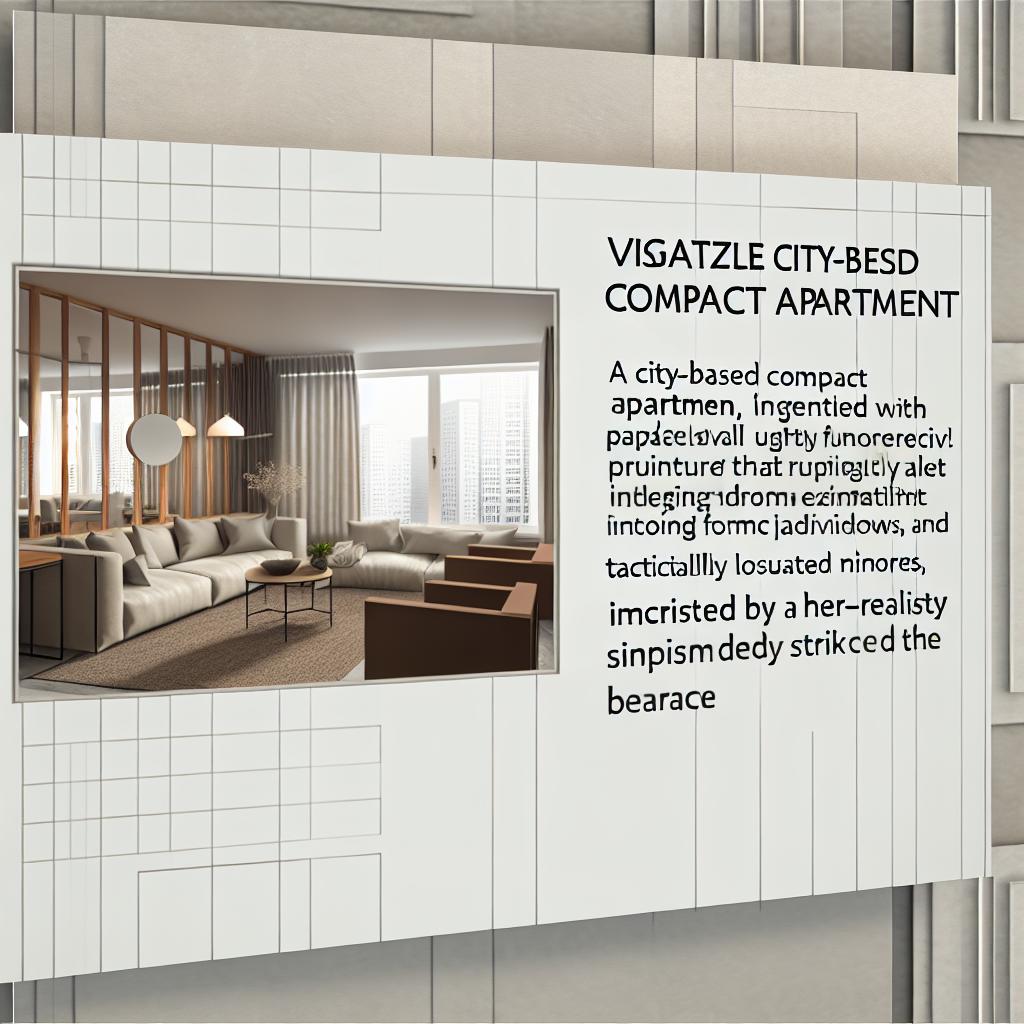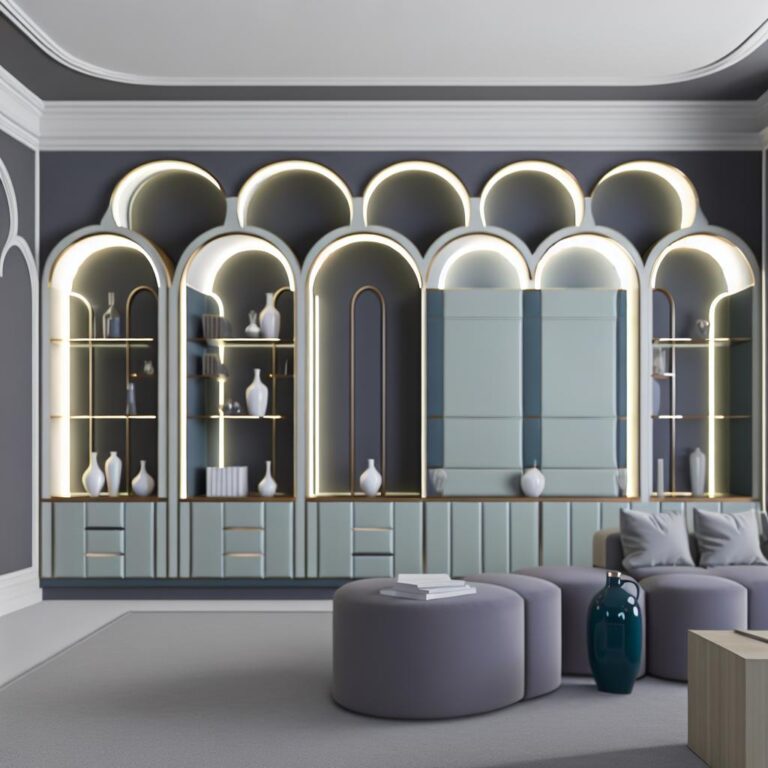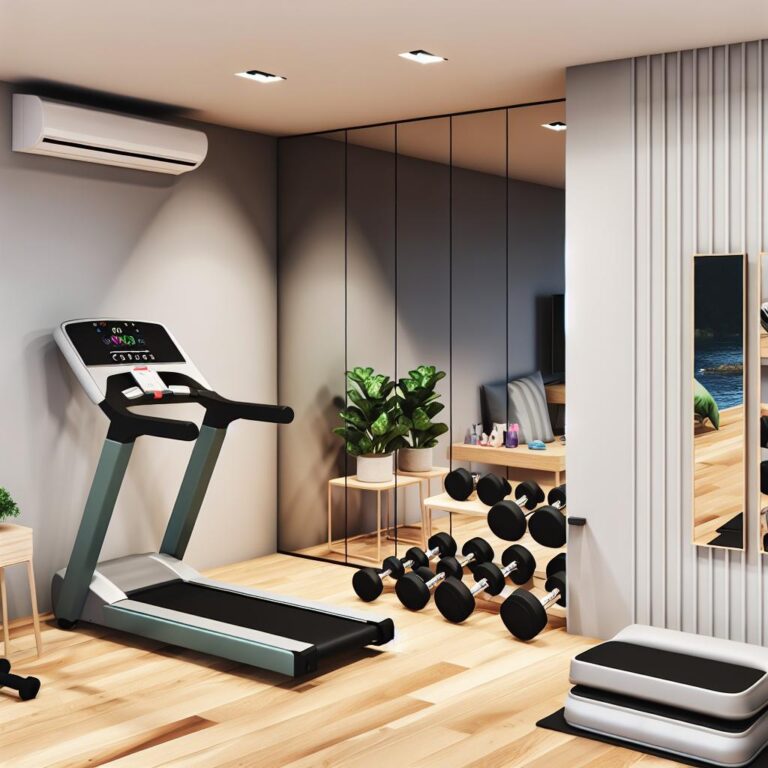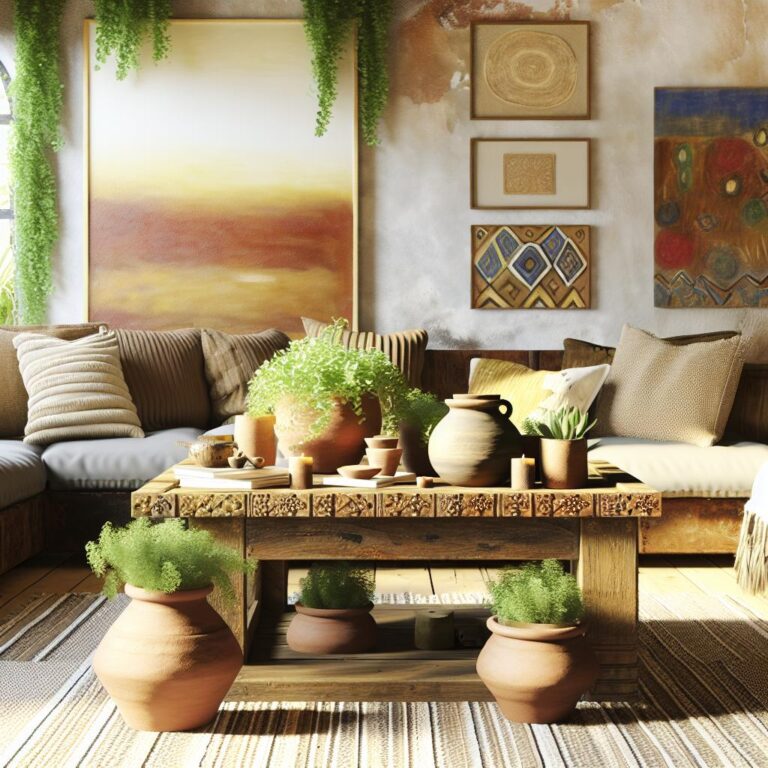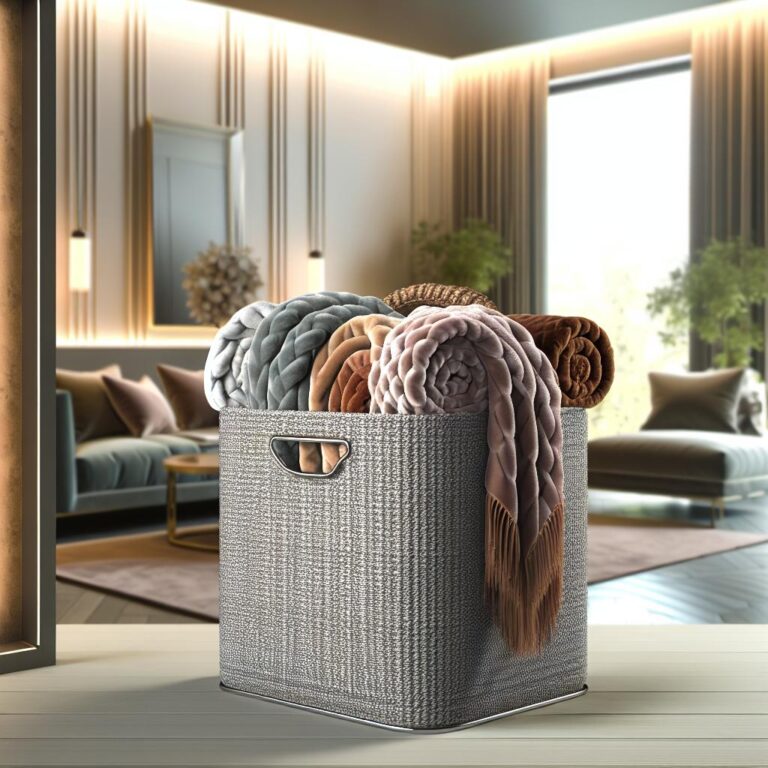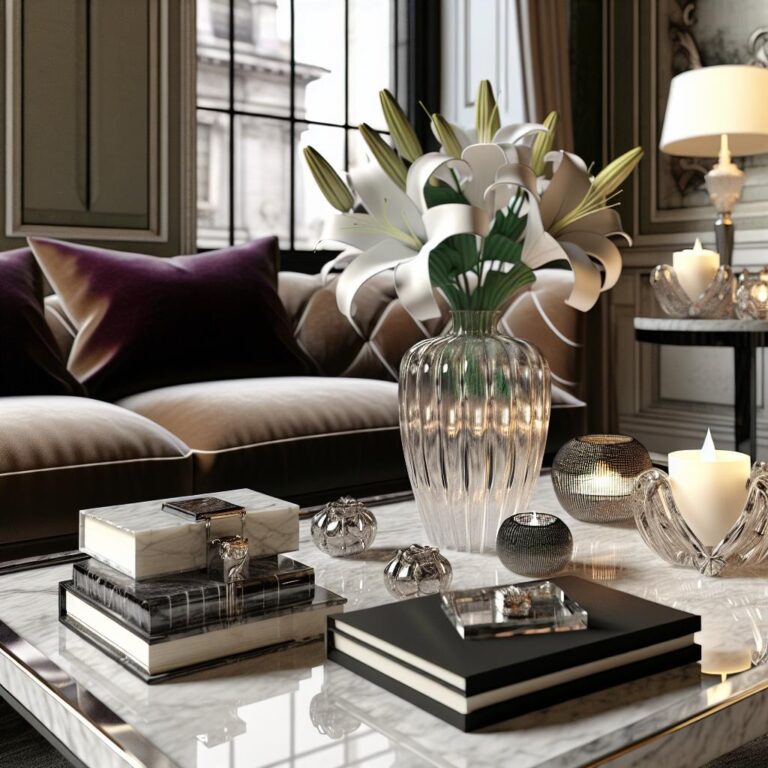Small space interior decor: Can it feel spacious?
- Use multifunctional furniture like sofa beds and foldable tables to maximize space in small homes.
- Opt for vertical solutions like tall shelves and hanging elements to increase room functionality.
- Choose light colors and mirrors to create an illusion of space and enhance natural light.
- Define spaces without using walls by employing rugs and smart furniture placement.
- Declutter to maintain a tidy appearance; keep only essential items.
- Add personal touches with art and plants, placing them strategically to avoid overcrowding.
- Use layered lighting solutions to brighten spaces; mirrors boost this effect by reflecting light.
- Implement contemporary design trends: minimalist, Scandinavian styles, and multi-purpose furniture.
- Integrate artistic elements and thematic decor to express personal style while maintaining functionality.
Ever feel cramped in your cozy, tiny nook? Let me show you how to turn compact areas into spacious retreats! Small space interior decor is key. It's all about smart choices and creative thinking. From clever furniture to vibrant colors, I'll share tricks that blend function with style. Ready to make your snug haven a roomy wonderland? Let's dive into transformative decor adventures!
How Can You Maximize Small Space Interior Decor?

Maximizing small space interior decor begins with understanding efficient apartment furnishing. This sense of efficiency keeps each item meaningful. Choose furniture that fits and serves more than one purpose. A sofa bed works as both seating by day and a bed by night.
When arranging a small space, think vertical. Shelves reaching up the wall make great use of often-wasted space. They draw the eye upward, which adds to the sense of spaciousness. Use the ceiling, walls, and every corner creatively. For instance, hang pots and pans above the kitchen counter instead of across it.
Next comes the magic of innovative small studio designs. Great design does not require a large room. Use foldable furniture, like dining tables or desks that fold away when not in use. They open up floor space when you need it most. Murphy beds or wall beds are outstanding for their elegance and practicality.
Colors play a vital role too. Light colors can transform your perception of space. Pale shades bounce light and make rooms feel bigger and brighter. Incorporating mirrors is another strategy. They reflect light and give the illusion of more depth.
Transitions between spaces should be seamless, especially in open-plan areas. Rugs help define separate spaces without erecting walls. This non-blocking style keeps the room full of energy and flow.
Furniture placement earns attention here. Avoid pushing everything against the wall. Create natural pathways to guide movement through the space. This arrangement keeps things fresh and accessible.
Organizational tips can change the game. Baskets and bins offer storage underneath tables or within cabinets. They keep things tidy and out of sight, boosting the appearance of space.
Personal touches lend personality to small spaces. Use artwork or photos strategically, placing them at eye level. Large art pieces can work where smaller ones might overwhelm due to visual clutter.
Haul out old, unused items. Clutter clouds small areas and stifles the ambience. Keeping only what you need fosters a cleaner, smoother, and tidier look.
Plants introduce a vibrant, living element. Select small potted plants for shelves or a larger one for a quiet corner. They bring life and soften the room while purifying the air.
Incorporate multi-use elements like ottomans that open to reveal storage inside or can serve as extra seating. These efficiently designed pieces enhance usability while saving space.
On a final note, lighting wins big when creating a sense of roominess. Combine overhead lights with floor lamps. Candlelight adds a warm glow, and task lighting aids activities like reading.
In small spaces, less is more. Thoughtful, deliberate choices make all the difference. They turn tiny apartments into cozy, stylish havens, each inch essential, each choice informed by careful consideration of what works best for you.
What Are the Best Furniture Solutions for Small Spaces?
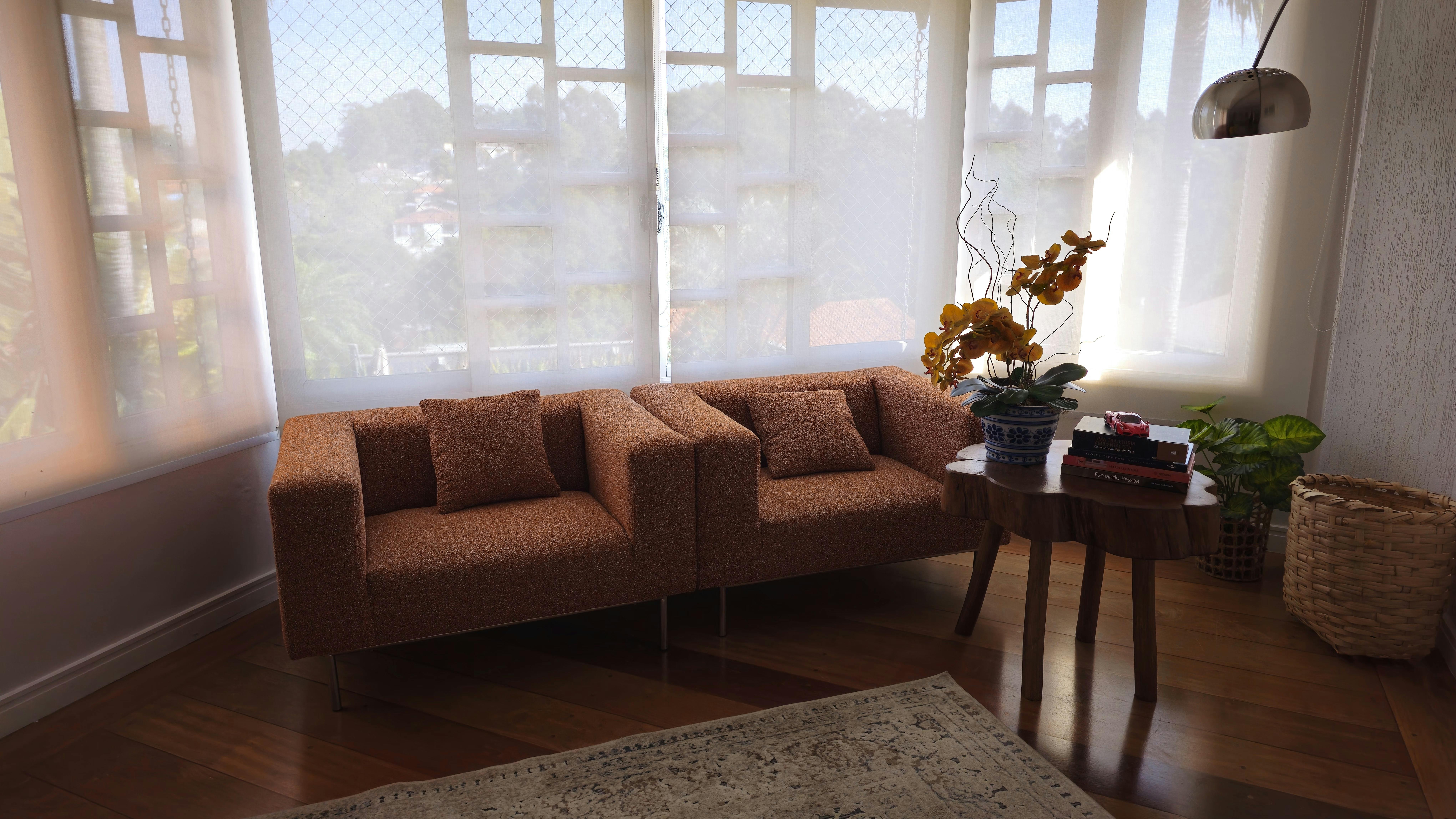
Small spaces can feel big if you use the right furniture. The trick is finding pieces that do more than one thing. Can a piece of furniture do more than one job? Yes, it can. A sofa bed is a great example. It is a seat by day, and a bed at night. Some have storage space, too. This multifunctional furniture saves space and money.
Smart storage is key in small homes. Tall shelves use the height of a room. They get things off the floor, freeing up space. Use boxes or baskets for hidden storage. Storage ottomans are another option. They store things and give you a place to rest your feet or sit.
In small spaces, seating is important. Small homes need seating that fits well. Think about a bench with storage under it. It gives you a place to sit and to store things. Chairs that stack or fold away can help, too. These seats don't need much space and are easy to move.
A small table can make a big difference. A drop-leaf table is good for small dining areas. Keep it small day-to-day. Then, open the leaf for more space when friends come over. Nesting tables are smart, too. Use them for coffee when guests visit and stack them away when not needed.
Some small-space furniture even has wheels. Move it when needed and change your room's look in no time. A rolling cart can be a bar, desk, or kitchen aid. Flexibility is key in small spaces.
Mirrors can help a room feel bigger. Find a mirror that doubles as a statement piece. Hang it where it will reflect light and make the room feel bright and large. Some furniture also has built-in mirrors, which is a bonus.
Loft beds are great for tiny bedrooms. They lift the bed off the floor to free up the space below. Use this area for a desk or small wardrobe. This approach keeps the room neat and tidy.
Corner shelves make use of tricky spaces. They fit where nothing else will and offer storage where little is expected. They keep your space looking neat.
In small spaces, each item must earn its place. So, think about how you live before buying. Will a new item make your life easier or clutter your space? Always aim for furniture that is useful, has multiple uses, and looks good.
Style is important, too. Look for slender furniture legs to see more of the floor. Light-colored woods and fabrics make a room feel airy. A clear glass table disappears into a room, unlike bulky wood.
With the right choices, a small space feels big. It provides comfort, utility, and a personal touch. Create a space that is smart and stylish by using an inventive approach to furniture.
Which Modern Design Trends Suit Small Homes?
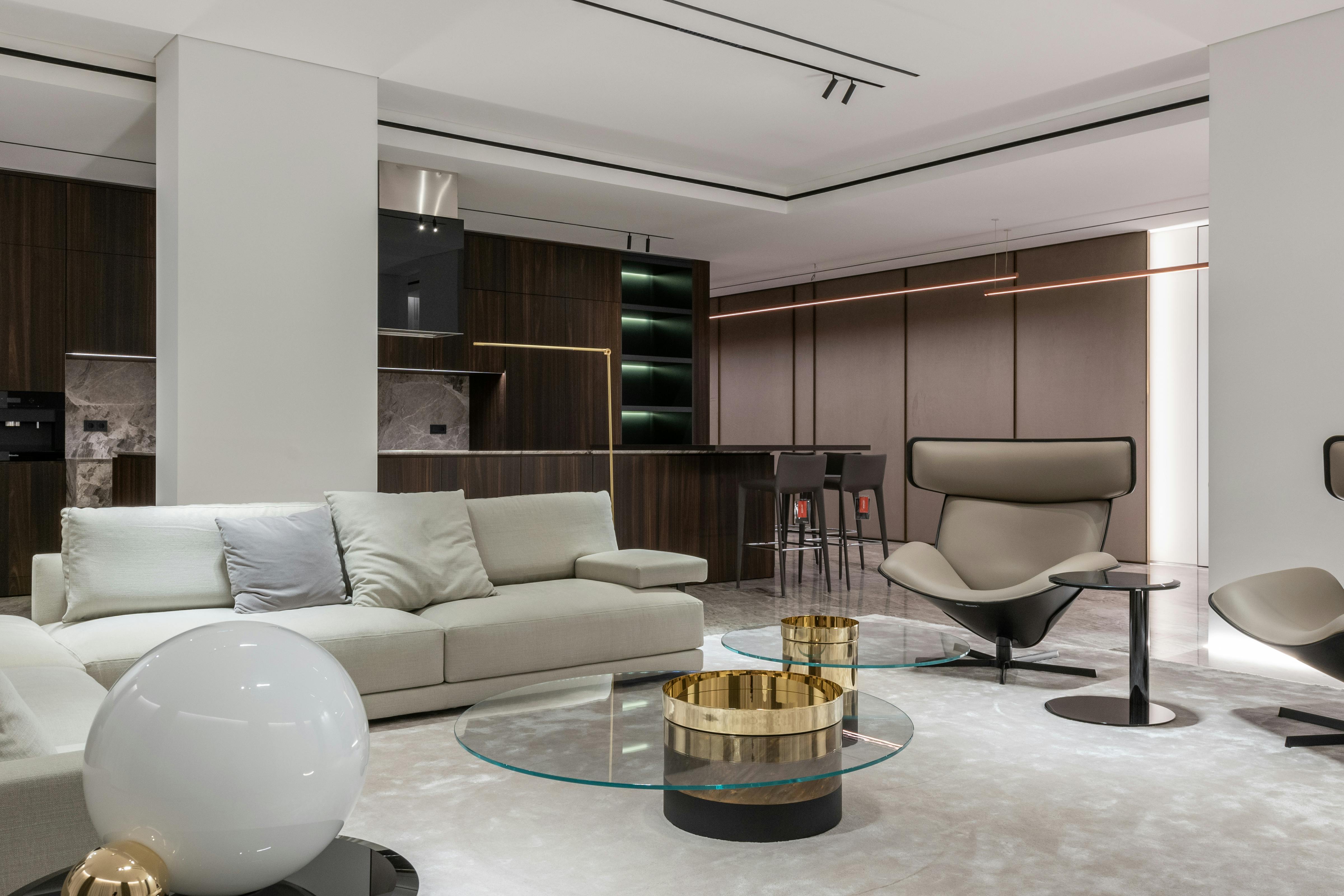
Modern design trends can transform small homes into stylish havens. The key is to find the right modern designs for small homes that emphasize a sense of space and functionality. A sleek, minimal look reigns supreme. This trend favors clean lines, neutral colors, and open spaces. It minimizes clutter and maximizes every corner.
So, what do you think makes a room feel bigger right off the bat? Precision: Light colors and mirrors. They bounce light and make walls feel farther away. Ideal choices include whites, soft grays, and pastels. Large mirrors create an illusion of depth. Place them across from windows to reflect natural light throughout your room.
Contemporary designs like multi-functional furniture embrace small spaces. Imagine a sofa that doubles as storage or a bed folding into the wall. These pieces save room and serve dual purposes. Emphasize flexibility when choosing furniture.
But how does one decide what to incorporate among so many small-room interior design trends? Scandinavian design has become a favorite. It focuses on simplicity and utility. Pale furniture with natural finishes pairs with cozy textiles like throws and cushions. It brings a warm vibe without dominating the room.
Does staying current with trends mean constantly changing decor? Absolutely not! Precision: Classic elements last longer. They adapt to new trends effortlessly. Choose foundation pieces—like sofas and tables—with timelessness in mind. Then, update accent pieces like pillows or artwork to keep it fresh.
Including contemporary elements in limited spaces can also mean playing with textures. Rugs, curtains, and cushions with various textiles such as wool, cotton, and leather add depth. Where can you find clear and consistent advice on trends? There are many resources, but a robust starting point could be House Beautiful's guide to small space design ideas.
One can't talk modern trends without mentioning color statements. Bold accent walls add visual interest. A single deep blue wall in a predominantly white room can work wonders. Why limit color to paint? Consider vibrant artwork or patterned wall decals.
Open shelving remains a top modern choice. Unlike traditional cabinets, they keep everything in view, making it easier to organize and access essentials. It’s perfect for kitchens or living rooms looking for an airy feel.
Do you feel plants could overwhelm small rooms? On the contrary, houseplants breathe life into small spaces. They purify air, add color, and connect interiors with nature. Choose tall, narrow pots to create vertical interest without sprawling.
Lighting plays a significant role in expressiveness. Combine task lighting with decorative fixtures. Sleek floor and table lamps, together with hanging pendants, keep spaces bright and inviting. They'll not only furnish necessary illumination but also act as decorative pieces.
For those who grapple with staying ahead in contemporary small space aesthetics, choose technology with design in mind. Flat-screen TVs that blend with walls and smart home gadgets add modern touches that save space.
Trends come and go, but a well-designed space endures. Aim for a mix of timeless features and current accents to create a small home that feels both expansive and trendy. With thoughtful design choices, even the smallest spaces can feel like palatial paradises.
How Can Smart Decor Changes Elevate Small Interiors?

To make the most of a small space, start with functional decor in restricted areas. This means using items that are both stylish and useful. Think of a coffee table with storage under it. This type of furniture helps keep things tidy while also looking good. It also makes the room feel bigger because you can store your things out of sight.
For space-enhancing decor, focus on pieces that draw the eye upwards. Tall shelves or long curtains give the room a sense of height. This can trick you into feeling like the space is larger than it is. Mirrors are a fantastic choice, too. Place them across from windows to spread light. This simple trick adds depth and makes any room feel larger.
When it comes to thematic interiors for small dwellings, always choose a theme. A theme can tie the whole room together. A coastal theme might include light blues and whites to mimic the sea and sky. The key is sticking to one color palette throughout the room. This makes it flow well and appear cohesive. Too many colors or patterns can make a space seem cluttered.
Implementing smart decor doesn't stop with big pieces. Small accents make a big difference. Use plants in corners or on shelves to add life and a splash of color. Plants can also clean the air, which is a nice bonus in any space.
Wall art is another way to elevate. Opt for one large piece instead of several small ones. This keeps the wall from looking busy. Consider art that matches your theme, like beach prints for a coastal vibe. DIY art, like a fall-themed canvas made with pumpkin seeds, adds personality and can be a fun project.
You can further enhance your space by developing thematic interiors in small-sized dwellings. Choose small, thematic accessories like pillows or throws. These can be swapped out each season for an easy refresh. Make sure they match the color scheme to keep things unified.
Lighting also plays a key role in decor changes. Use various sources of light to create warmth. Floor lamps or wall sconces can save space and add style. Always opt for brighter bulbs that mimic daylight. This makes small rooms feel airy and welcoming.
In small kitchens, use decor to add function. A pegboard can hang pots, pans, and utensils. This frees up drawer space and keeps items within reach. In bathrooms, add a shelf over the toilet for extra storage. Use baskets to keep things neat and tidy.
Even if your space is limited, you can still achieve a stylish and functional home. With thoughtful choices and a creative approach, every room can feel just right. Every piece should have a purpose, and, when chosen correctly, decor transforms simple spaces into beautiful retreats.
What Are the Top Lighting Solutions for Compact Areas?

Choosing the right lighting can make a compact room feel larger. The key is to layer your lighting with primary and secondary sources. Start with ceiling lights, like pendants or chandeliers, which draw the eye upwards. This creates the illusion of height. For task lighting, consider adjustable lamps that provide directed light where needed without cluttering tables or floors.
A clever solution is to use wall-mounted sconces; these free up valuable surface area and can brighten dark corners. If floor space is tight, yet another smart solution is using under-cabinet and recessed lights. These solve the problem of lighting without occupying room.
How can you enhance small spaces with light? The answer lies in maximizing natural light. Use sheer curtains or blinds to let in as much light as possible. Hanging mirrors opposite windows can reflect light and give the feeling of a more expansive area. Additionally, white or light-colored ceilings and walls amplify brightness by reflecting light.
Don't forget about adding some vibrant color schemes. While it may seem counterintuitive, color can add depth and character to small spaces. Using playful, vibrant colors in your decor or lighting fixtures can add zest to a room. Carefully choose hues that complement each other and work with your lighting to create a harmonious look.
One effective method is to incorporate lamps and fixtures with warm tones, like soft yellows or coral, which give cozy vibes. When paired with neutral walls, this color choice can make your room feel inviting without losing any open and airy feel.
Colored LED lights offer another option to inject liveliness into the space. These can be placed under shelves or behind furniture as indirect lighting, providing both color and ambiance without the need for additional decor.
What types of lights best suit a small room? Compact fluorescent lamps (CFLs) or LEDs work well. They not only supply bright light but also save energy. These lights come in various color temperatures, allowing you to choose brightness ranging from warm to daylight. Focused task lighting combined with ambient fixtures can transform the feel of a small area drastically. Ceiling lights are optimal for general light, enabling the rest of the lighting to add layers for versatile moods.
To align with these lighting choices, complement them with vibrant color schemes for small areas. A bright room should feel lively, not chaotic, so be selective with additional colors.
Create distinct spaces within one room by employing different lighting zones. For instance, a reading nook could have a focused lamp while a dining area may be enhanced with overhead lighting. This also helps delineate the areas without physical dividers. In small spaces, lighting can organize and even expand your environment, offering a stylish and practical decor solution. Remember that the aim is to blend style with smart functionality to maximize the delight of living in a small, cozy space.
How to Incorporate Artistic Touches inside Small Spaces?
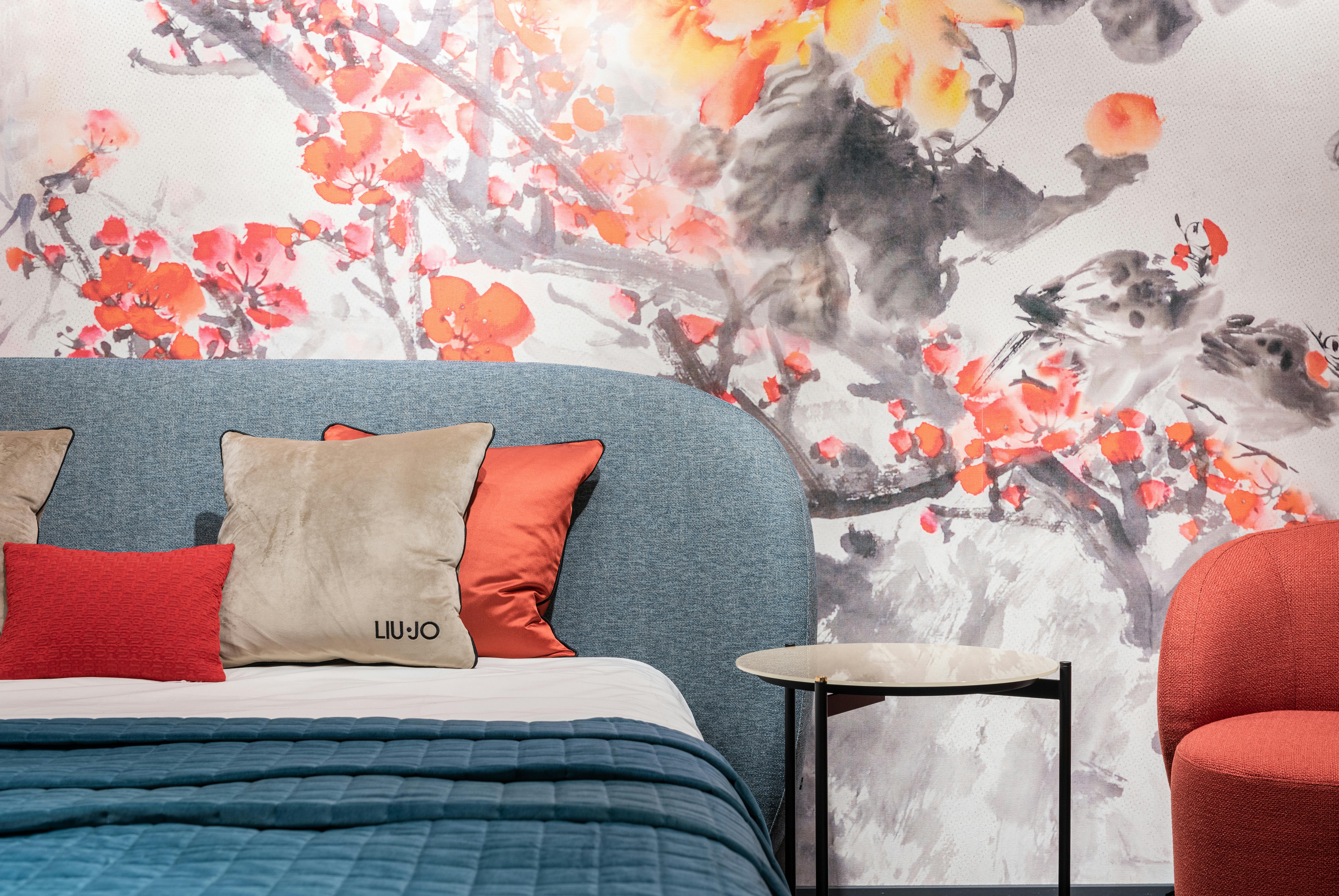
Small spaces can possess big charm with the right artistic touch. You might wonder, how can you express yourself in a place with limited room? The answer lies in making the most of every area. In small flats, artistic expression can become a part of daily life. The walls, corners, and even ceilings hold potential for creativity.
Artistic Expression in Minimal Environments
When space is tight, each piece counts. Choose art that will speak volumes without taking up much room. Mini paintings and sculptures can add elegance and intrigue. Consider DIY projects like the Pumpkin Seed Art. Start with a blank 12” x 12” canvas. Use colors that pop, like Coffee Bean and Orange Poppy, to keep your art lively. Use materials such as unfinished wood letters to add layers to your creations. This not only beautifies but reflects your personal taste.
Designing Cozy Nooks Within Restricted Spaces
Cozy nooks can transform a tiny home into a haven. A quiet corner can become magical with a few touches. Use soft pillows, a small lamp, or wall art to set the mood. Paint wooden panels in soothing shades to make the space inviting. You can use the leaf patterns from the fall garland to create a theme. Arrange pumpkin seeds using craft glue to shape leaves on the wall. This creates a link with nature and adds depth. Small spaces gain character with these intimate designs.
Redefining Elegance in Smaller Living Quarters
Elegance isn’t about the size, but the feeling it evokes. In smaller quarters, redefine class with purpose and design. Imagine using Mod Podge on a crafted piece to seal your art, giving it shine. Elements like sheer ribbons add grace and softness to the room. Decor doesn’t have to be grand to be impactful. Select items that complement the room’s color and size. Match furnishings with art, such as light wood or woven fabrics. In small spaces, harmony is key to create a sense of luxury. Decorations with faux leaves or simplified sculptures can complete the look.
In conclusion, artistic touches can enliven any small dwelling. The key is personal details, planned with creativity and care. Even in a tiny area, there are endless ways to showcase your style. I encourage you to explore these ideas and adopt what resonates with your tastes. As each room holds potential for an artistic adventure, let your surroundings echo your inner artist.
Conclusion
Maximizing small spaces is an art. We explored efficient furnishing techniques and innovative designs to transform limited areas. Simply put, it's all about smart choices like multifunctional furniture and clever storage. Modern design trends can inspire you to refresh your small home with style. Remember, the right lighting and vibrant color schemes matter. Add an artistic touch to make every corner unique. Small spaces challenge creativity, but with the right approach, they can feel expansive and inviting. Embrace your space, redefine its limits, and create a home that reflects your style and efficiency.

